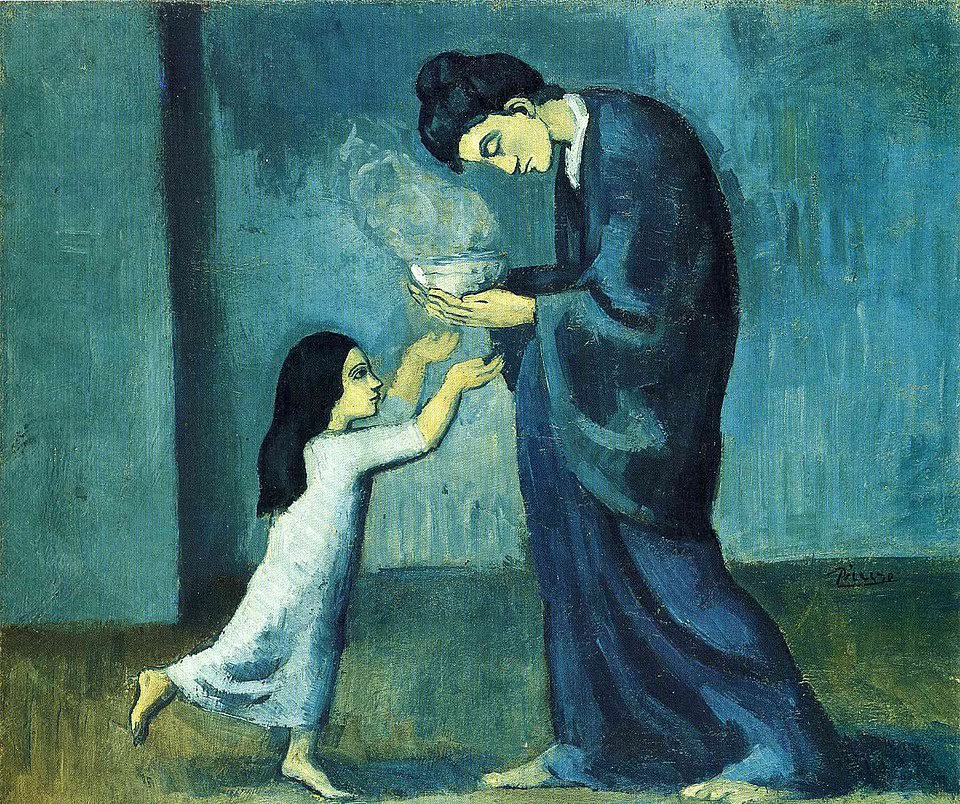
Colour has always been more than decoration. It’s been a tool, a symbol, a weapon, a whisper. From the moment early humans ground ochre into dust and smeared it across cave walls, colour has carried meaning; sometimes spiritual, sometimes emotional, sometimes simply beautiful. And in the long, evolving story of art, colour has shifted in purpose and power, adapting to each age’s need to see and to be seen.
At Andipa Gallery, we’ve long been fascinated by this evolution. Many of the artists we represent - Picasso, Matisse, Chagall, Riley, Hockney - each played a pivotal role in shaping the language of colour in the modern era. And in our latest exhibition, Summer in Full Colour, we celebrate that legacy: a curated selection of original prints and paintings that explore how colour continues to challenge, seduce and surprise.
It’s almost difficult now to imagine a world in which colour was rare, expensive, and bound by hierarchy. For centuries, certain hues were reserved for royalty, religion, or the extremely wealthy: lapis lazuli for the Virgin Mary, imperial purple for emperors, vermilion for the saints. But the 19th and 20th centuries shattered these boundaries. Synthetic pigments, new philosophies, and global cultural shifts liberated colour from tradition. Suddenly, it was everywhere- and artists seized the opportunity.
Take Matisse. If any artist embodied the sheer joy of colour, it was him. For Matisse, colour was not a supplement to form -it was form. His vibrant aquatints and cut-outs abandon shading and illusion in favour of pure chromatic expression. In works like La Tristesse du Roi or Icarus, blue and red aren’t just colours, they’re characters. His radical belief was that colour alone could express emotion, without the need for narrative. “Seek the strongest colour effect possible,” he once said, “...the content is of no importance.” And yet, his work is full of content, just not the kind you can name. It’s content you feel.
Chagall approached colour differently. Where Matisse used colour as a kind of abstraction, Chagall wove it into memory and dream. His deep blues, tender purples, and glowing reds feel like fragments of stories told at twilight. For Chagall, colour was never just about harmony or design, it was a vehicle for magic. The floating lovers, fiddlers, goats and village rooftops in his prints aren’t bound by gravity or realism; they exist in a world ruled by emotion and memory, where colour becomes the air they breathe.
Then there’s Picasso, who in many ways understood colour by first rejecting it. His Blue Period is a masterclass in tonal restraint, where emotion is expressed not through vivid hues, but through their deliberate absence. Later, in his Rose Period, and throughout his Cubist experiments, colour returned in unexpected ways - sometimes muted, sometimes riotous. For Picasso, colour was never consistent. It changed depending on what he needed to say. It wasn’t about beauty, it was about power. He knew when to hold back, and when to let go.
Fast forward to Bridget Riley, and colour becomes almost scientific. Her exploration of optical perception uses repetition, contrast, and precision to create movement on the static page. Her early black-and-white works drew attention for their intensity, but it’s her colour works that truly disorient and delight. By manipulating hue, saturation and placement, Riley turns colour into vibration. The viewer becomes part of the work; eyes adjusting, nerves twitching, brain reacting before thought has time to catch up.
And then, of course, there’s David Hockney. Like Chagall, Hockney’s colours are rooted in memory-but filtered through a different lens. His tones are crisp, modern, sun-drenched. Whether capturing the stillness of a Los Angeles pool or the softness of Yorkshire fields, Hockney’s palette evokes the light of lived experience. His iPad drawings and lithographs show that colour need not be loud to be luminous. His work reminds us that colour, like memory, is personal. Two people may see the same scene, but never the same blue.
What connects these artists, and what Summer in Full Colour seeks to honour, is the understanding that colour is never neutral. It always carries weight. Sometimes symbolic, sometimes sensual, often both. Whether it’s Picasso draining the canvas of warmth to reflect loss, or Matisse exploding with colour to express joy, these choices are never random. They are deliberate, and deeply human.
This exhibition isn’t just about summer as a season. It’s about summer as a state of mind-a time when we see the world with heightened senses, when light stretches into the evening, and when colour feels a little more alive. The works on display, many of them editioned prints, invite the viewer to see colour not as background but as foreground. They ask us to slow down, to look again, and to recognise the emotion carried in pigment.
